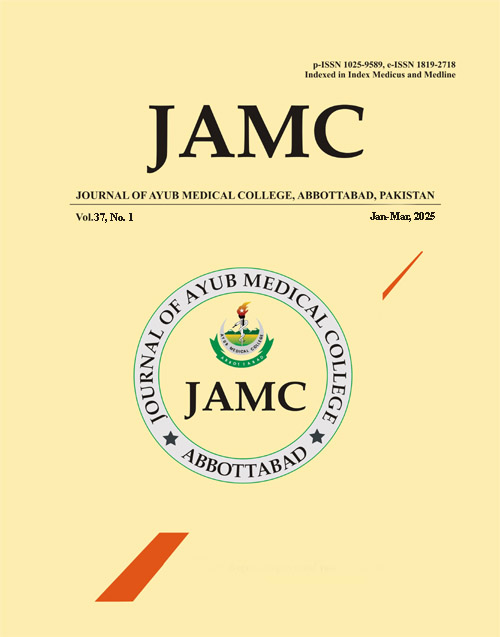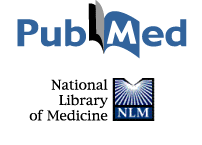BRONCHIECTASIS IN CHILDREN WITH PCD: MPA (MAIN PULMONARY ARTERY) AND MPA-TO-AA RATIO AS MARKERS OF DISEASE SEVERITY
DOI:
https://doi.org/10.55519/JAMC-02-13307Abstract
Objective
Lung function in primary ciliary dyskinesia becomes abnormal from an early age and doing any lung function test in the first few years of life requires a child's cooperation which can be difficult. HRCT is done every few years to monitor lung structure. We aimed to look at the relationship of bronchiectasis with the size of MPA (main pulmonary artery) and MPA-to-AA (ascending aorta) ratio. This can be used as an additional disease marker when assessing CT chest.
Methods
This was a retrospective analysis of CT chest measurements in children with confirmed PCD, followed up at our centre between 2008-2020. Diameters of the main pulmonary artery, ascending and descending aorta were measured at predetermined reference points. The scans were independently analysed by two radiologists. CT chest contrast images were obtained on a 64 slice- Discovery CT750 HD, GE Healthcare medical system. Bronchiectasis was graded using the Modified Reiff scoring method.
Results
38 measurements from 26 patients were taken into consideration to assess the relationship between MPA diameter, MPA: Ascending aorta and bronchiectasis. There was a positive correlation between the age-adjusted MPA-to-AA ratio and severe bronchiectasis (r=0.59, p=0.47). Children without bronchiectasis had an inverse correlation with MPA-to-AA ratio (r= -0.28, p=0.16). MPA diameter was positively related to both severe (r=0.59, p=0.06) and no bronchiectasis (r=0.91, p=0.01). There was a disproportionate age-dependent increase in the size of MPA in children who had multiple scans once bronchiectasis progressed from mild to severe.
Conclusions
This is a pioneer study looking at CT chest markers like MPA (diameter) and MPA-to-AA ratio in children with PCD and their relevance to the severity of bronchiectasis. An elevated MPA-to-AA ratio can be used as a marker of severe bronchiectasis however MPA diameter on its own has limited value in differentiating mild from severe bronchiectasis.
References
Hannah WB, Seifert BA, Truty R, Zariwala MA, Ameel K, Zhao Y, Nykamp K, Gaston B. The global prevalence and ethnic heterogeneity of primary ciliary dyskinesia gene variants: a genetic database analysis. The Lancet Respiratory Medicine 2022;10(5):459-468.
Kuehni CE, Frischer T, Strippoli M-PF, Maurer E, Bush A, Nielsen KG, Escribano A, Lucas JSA, Yiallouros P, Omran H, et al. Factors influencing age at diagnosis of primary ciliary dyskinesia in European children. Eur Respir J 2010;36(6):1248-1258.
Marthin JK, Petersen N, Skovgaard LT, Nielsen KG. Lung function in patients with primary ciliary dyskinesia: a cross-sectional and 3-decade longitudinal study. Am J Respir Crit Care Med 2010;181(11):1262-1268.
Jat KR. Spirometry in children. Prim Care Respir J 2013;22(2):221-229.
Tiddens HAWM, Stick SM, Davis S. Multi-modality monitoring of cystic fibrosis lung disease: the role of chest computed tomography. Paediatr Respir Rev 2014;15(1):92-97.
Eigen H, Bieler H, Grant D, Christoph K, Terrill D, Heilman DK, Ambrosius WT, Tepper RS. Spirometric Pulmonary Function in Healthy Preschool Children. Am J Respir Crit Care Med 2001;163(3):619-623.
Nystad W, Samuelsen S, Nafstad P, Edvardsen E, Stensrud T, Jaakkola J. Feasibility of measuring lung function in preschool children. Thorax 2002;57(12):1021-1027.
Halbeisen FS, Goutaki M, Spycher BD, Amirav I, Behan L, Boon M, Hogg C, Casaulta C, Crowley S, Haarman EG, et al. Lung function in patients with primary ciliary dyskinesia: an iPCD Cohort study. European Respiratory Journal 2018 [accessed 2020 Mar 25];52(2). https://erj.ersjournals.com/content/52/2/1801040
Maglione M, Bush A, Montella S, Mollica C, Manna A, Esposito A, Santamaria F. Progression of lung disease in primary ciliary dyskinesia: Is spirometry less accurate than CT? Pediatric Pulmonology 2012;47(5):498-504.
Horsley A. Lung clearance index in the assessment of airways disease. Respiratory Medicine 2009;103(6):793-799.
Robinson P, Morgan L. Bronchiectasis in PCD looks different to CF on CT scan. Multidisciplinary Respiratory Medicine 2018;13(1):24.
Jain K, Padley SPG, Goldstraw EJ, Kidd SJ, Hogg C, Biggart E, Bush A. Primary ciliary dyskinesia in the paediatric population: range and severity of radiological findings in a cohort of patients receiving tertiary care. Clin Radiol 2007;62(10):986-993.
Arlachov Y, Ganatra RH. Sedation/anaesthesia in paediatric radiology. Br J Radiol 2012;85(1019):e1018-1031.
Reiff DB, Wells AU, Carr DH, Cole PJ, Hansell DM. CT findings in bronchiectasis: limited value in distinguishing between idiopathic and specific types. American Journal of Roentgenology 1995;165(2):261-267.
Chalmers JD, Goeminne P, Aliberti S, McDonnell MJ, Lonni S, Davidson J, Poppelwell L, Salih W, Pesci A, Dupont LJ, et al. The Bronchiectasis Severity Index. An International Derivation and Validation Study. Am J Respir Crit Care Med 2014;189(5):576-585.
Kennedy MP, Noone PG, Leigh MW, Zariwala MA, Minnix SL, Knowles MR, Molina PL. High-resolution CT of patients with primary ciliary dyskinesia. AJR Am J Roentgenol 2007;188(5):1232-1238.
Tiddens HAWM, Kuo W, van Straten M, Ciet P. Paediatric lung imaging: the times they are a-changin'. Eur Respir Rev 2018;27(147).
Montella S, Santamaria F, Salvatore M, Pignata C, Maglione M, Iacotucci P, Mollica C. Assessment of chest high-field magnetic resonance imaging in children and young adults with noncystic fibrosis chronic lung disease: comparison to high-resolution computed tomography and correlation with pulmonary function. Invest Radiol 2009;44(9):532-538.
McCallum GB, Binks MJ. The Epidemiology of Chronic Suppurative Lung Disease and Bronchiectasis in Children and Adolescents. Front Pediatr 2017 [accessed 2020 Jul 23];5. https://www.frontiersin.org/articles/10.3389/fped.2017.00027/full
Chang AB, Bush A, Grimwood K. Bronchiectasis in children: diagnosis and treatment. The Lancet 2018;392(10150):866-879.
Greenberg SB, Lang SM, Gauss CH, Lensing SY, Ali S, Lyons KA. Normal pulmonary artery and branch pulmonary artery sizes in children. Int J Cardiovasc Imaging 2018;34(6):967-974.
Bayindir P, Bayraktaroglu S, Ceylan N, Savas R, Alper HH. Multidetector computed tomographic assessment of the normal diameters for the thoracic aorta and pulmonary arteries in infants and children. Acta Radiol 2016;57(10):1261-1267.
Tadd K, Morgan L, Rosenow T, Schultz A, Susanto C, Murray C, Robinson P. CF derived scoring systems do not fully describe the range of structural changes seen on CT scans in PCD. Pediatric Pulmonology 2019;54(4):471-477.
Brody AS, Molina PL, Klein JS, Rothman BS, Ramagopal M, Swartz DR. High-resolution computed tomography of the chest in children with cystic fibrosis: support for use as an outcome surrogate. Pediatric Radiology 1999;29(10):731-735.
Bhalla M, Turcios N, Aponte V, Jenkins M, Leitman BS, McCauley DI, Naidich DP. Cystic fibrosis: scoring system with thin-section CT. Radiology 1991;179(3):783-788.
Compton GL, Florence J, MacDonald C, Yoo S-J, Humpl T, Manson D. Main Pulmonary Artery-to-Ascending Aorta Diameter Ratio in Healthy Children on MDCT. AJR Am J Roentgenol 2015;205(6):1322-1325.
Nyilas S, Bauman G, Pusterla O, Sommer G, Singer F, Stranzinger E, Heyer C, Ramsey K, Schlegtendal A, Benzrath S, et al. Structural and Functional Lung Impairment in Primary Ciliary Dyskinesia. Assessment with Magnetic Resonance Imaging and Multiple Breath Washout in Comparison to Spirometry. Ann Am Thorac Soc 2018;15(12):1434-1442.
Eichinger M, Heussel C-P, Kauczor H-U, Tiddens H, Puderbach M. Computed tomography and magnetic resonance imaging in cystic fibrosis lung disease. J Magn Reson Imaging 2010;32(6):1370-1378.
Downloads
Published
How to Cite
Issue
Section
License
Copyright (c) 2025 Adnan Zafar, Mohammed Salman Qureshi , Saba Ayub

This work is licensed under a Creative Commons Attribution-NoDerivatives 4.0 International License.
Journal of Ayub Medical College, Abbottabad is an OPEN ACCESS JOURNAL which means that all content is FREELY available without charge to all users whether registered with the journal or not. The work published by J Ayub Med Coll Abbottabad is licensed and distributed under the creative commons License CC BY ND Attribution-NoDerivs. Material printed in this journal is OPEN to access, and are FREE for use in academic and research work with proper citation. J Ayub Med Coll Abbottabad accepts only original material for publication with the understanding that except for abstracts, no part of the data has been published or will be submitted for publication elsewhere before appearing in J Ayub Med Coll Abbottabad. The Editorial Board of J Ayub Med Coll Abbottabad makes every effort to ensure the accuracy and authenticity of material printed in J Ayub Med Coll Abbottabad. However, conclusions and statements expressed are views of the authors and do not reflect the opinion/policy of J Ayub Med Coll Abbottabad or the Editorial Board.
USERS are allowed to read, download, copy, distribute, print, search, or link to the full texts of the articles, or use them for any other lawful purpose, without asking prior permission from the publisher or the author. This is in accordance with the BOAI definition of open access.
AUTHORS retain the rights of free downloading/unlimited e-print of full text and sharing/disseminating the article without any restriction, by any means including twitter, scholarly collaboration networks such as ResearchGate, Academia.eu, and social media sites such as Twitter, LinkedIn, Google Scholar and any other professional or academic networking site.










